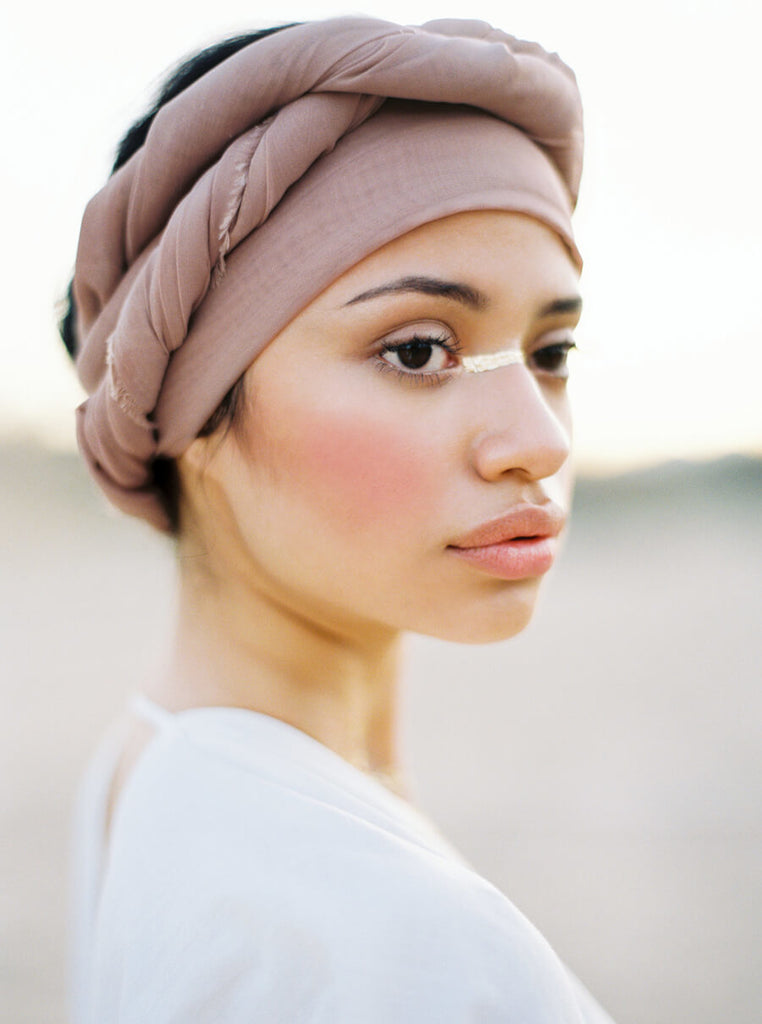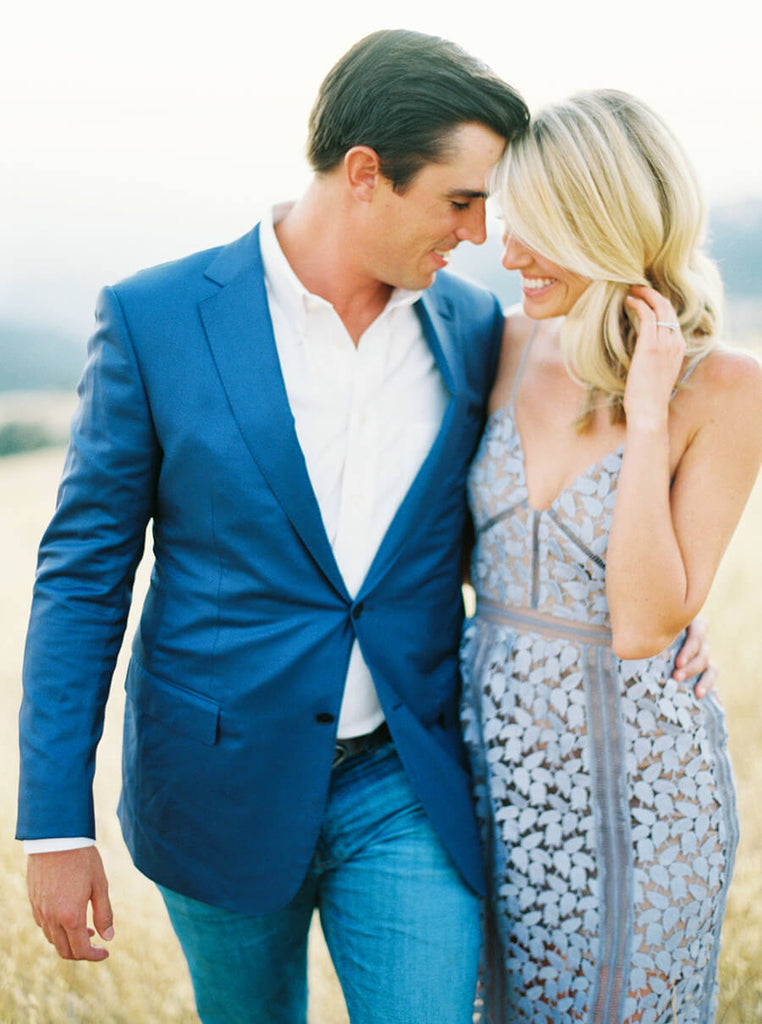Why Shoot Film? It Could Change Your Life!

Guest post by Erich McVey
Why shoot film?
I can honestly say, without a shadow of a doubt, that medium format film changed my life. In 2011, after a few years of working to grow my photography business and shooting solely with digital cameras, I hit a wall. The wall was built from both exhaustion and artistic frustration. I was exhausted from the countless hours spent behind a computer editing my digital work. Each wedding took days to perfect, and even after more hours than I ever thought necessary were put into each shoot in post-production, I still felt deflated when I analyzed my final product.
That was the artistic frustration—I hit a ceiling shooting digitally. I couldn’t get my images to look quite how I wanted. They were missing something. What exactly that “something” was, I couldn’t put into words, but I knew it when I saw it in the work of other photographers whom I admired. Finally, I came to an important realization.
All of my favorite photographers had one thing in common: They shot film.
So I took the leap. I was going to be a film photographer. I bought my first Contax 645 medium format film camera and, after attending Jose Villa’s workshop, dove head first into shooting film. I knew that just picking up a film camera wouldn’t cause me to suddenly create the same work as the film photographers I so revered. I knew it would take time, commitment, and hard work. But truly, even after shooting just my first roll of film, I was hooked and knew my life as a photographer was changed forever.
*Sidenote: Kirk Mastin was more or less the only wedding photographer in the Northwest shooting any film back then, so naturally my wife and I HAD to have him for our wedding!

Film Saves You Time
Before I converted to film, I was killing myself behind a desk editing digital images all day, every day. I realized that personally, it wasn’t a realistic way for me to continue as a photographer. There was no way I was going to spend the next five years, ten years, who knows how long—slaving away behind a desk, trying my hardest to transform RAW digital images into something they could never be. I was spending the majority of that time attempting to make those RAW images look like film images with Lightroom presets anyway—so taking the leap and shooting the real thing? Easiest decision I ever made. To justify the leap, I only had to answer one question: is my current situation sustainable?
The answer was no.
I couldn’t imagine doing the same thing over and over for years when that very thing left me feeling frustrated and empty.
Can you relate? What does your current workflow look like when editing your images? For some, time spent editing images is rewarding and fulfilling—there is absolutely nothing wrong with that, but it’s just not for me. Do you enjoy the editing process? If you could, would you like to shorten the amount of time spent editing each shoot?

Shooting film cut my editing time down considerably. I felt like I had my life back, and wasn’t living behind a computer screen anymore. It was incredibly liberating and allowed me time to focus on other aspects of work that I enjoyed much more than editing. Instead of spending 12-15 hours on each of my weddings post-production, these days I knock them out in about 3-4 hours. By shooting film, I’ve shortened my editing time for each wedding by about 10 hours.
Now, let’s not simply consider this a savings of 10 hours. Let’s say that I can now invest ten additional hours into other important aspects of my business for growth and success. What are the first things you give up when you’re stretched too thin? Running a business on your own is tough work, and oftentimes you have to prioritize and let the smaller, less pressing tasks fall to the bottom of the never-ending to-do list.
Take a look at what’s at the bottom of your own to-do list. Is it blogging or updating your portfolio? Submitting your work for publication or sharing images with vendors? Networking, managing your social media account, or optimizing your website for SEO? Are you continually putting off that editorial shoot you’ve been dreaming up? These are all things that can help to grow our businesses, but these important items on our to-do lists get bumped to the bottom, where we let them stare us in the face for months without action.
We somehow justify the postponement of these actions with statements like, “I’m too busy—it can wait,” and the promise of “I’ll do it in the off-season.” As noble as our intentions are, the reality is that when we’re busy, these things are the first to go because there’s technically no ‘deadline’ and there isn’t a client requesting that you have them done by next week.
Regardless of the fact that these are the very things that keep us excited about our art and keep our business moving forward, we don’t consider them to be essential. This has to change. If it doesn’t, you’ll look up one day and realize it’s another year later and you still have the same portfolio on your website, your Instagram profile is stagnant, all those pushed-to-the-bottom items on your to-do list are still left unchecked, and your business is at the same place it was last year.

Film Helps With Burn Out
When we spend every waking hour of our days editing, we also risk burning out. We risk losing zest for our craft. Personally, the time I spend editing my film work is much more enjoyable than when I edited RAW digital files. (Regardless of whether you shoot film or digital, there is no way around it—you will spend time editing your images. Is the time greatly reduced when shooting film? Yes, but there is still time spent editing.)
When I get my film scans back from the lab, I’m immediately uplifted and rewarded. I’m not looking at RAW images that need a ton of post-production work before they’re presentable. I’m looking at beautiful, true reflections of what I saw and captured. I’m receiving a gift and immediate gratification for something I worked so hard to create. Instead of using my editing time trying to manipulate images, I’m using my time to appreciate each image and understand why all of the factors at play created each particular result so that I can use this knowledge moving forward into future shoots.
*One more important side note – I do still shoot digital when I feel it’s the best medium for my work and my clients, like during the dark hours of an evening wedding reception. For those digital images, I use Mastin Labs presets to keep my film look consistent throughout and keep post-processing as simple as possible.

Film Helps You Shoot With Intention
As artists, it is important that we are constantly evolving, growing, and improving. Without the constant ebb and flow of artistic growth, we risk becoming stagnant, uninspired, and indifferent about our craft. For me, shooting film gave me a better platform for continuing to grow, adding more value to my final product and injecting new life and inspiration into my artistic process.
When I’m using my Contax, I’m fully immersed in the moment. I’m in tune with the interactions between my clients, the light hitting their faces and the environment, and the manner in which all of the elements are working together to create each image. There is an almost sacred feeling to creating images with film. I have to honor the moment, put my all into it, be wholly present, and trust in the process and myself to create the image, knowing that I won’t be able to use the crutch of immediate feedback with the screen on the back of a digital camera.
When I shot digitally, each shoot felt like a stop and start process full of interruptions. I was repeatedly taken out of the moment, having to switch back and forth between reality and an image on a screen. Every time I’d look at that screen, I was limiting my potential to fully comprehend all of the factors working together to create the moment. After all, I’m human and only have so much thought and attention to give.
The process of shooting film allows me to slow down and focus on moments and interactions, rather than battling the constant pull of looking at the image displayed on the screen after each shot.

Shooting film forces me to create each photograph with intention. Like it or not, deep down my subconscious knows that every time I click the shutter, it’s going to cost me about $1.50. This is by no means the driving force behind my approach, but it is something that I acknowledge and embrace. I don’t let it hold me back (I still shoot plenty – delivering about 250 images for a portrait session and about 100 final images per hour for wedding coverage), but I do allow it to edit me. I spend more time during each shoot thinking, rather than clicking.
I find that I’m much more likely to work my way into the perfect pose or perfect frame when I’m thoughtfully adjusting the elements and factors rather than simply shooting until I see what I like. This slower shooting cadence not only increases my ability to create a better end product, but it also benefits my clients’ experience.
I’ve heard many clients say they loved the slow, calm pace of their shoot. They’ve made comments such as, “You really put us at ease. We didn’t feel rushed or stressed the entire time” and “I loved how I could tell you really took your time to make each image perfect. It made us feel important and valued.” I take my time during the shoot to engage with my clients and ensure they are comfortable and confident in front of my camera—while also creating the best work I possibly can.
To be clear, many digital photographers have the talent and capacity to self-edit and slow down their shooting process while using only a digital camera. Personally, I found it nearly impossible to slow down and shoot as intentionally using a digital camera as I do when using film. When I shoot digitally, I keep and deliver roughly 20% of the images I shoot, whereas with film I keep and deliver well over 90% of the images I shoot.
I love the fact that when I shoot film, each image has meaning, purpose, and intention. I don’t need to shoot 4000 images to deliver 800. Instead, I shoot 1000 images to deliver 900, feeling confident that the final product is exactly what I want it to be. This intention leaves me more fulfilled as an artist, and ultimately plays a tremendous role in helping me create the best images I’m capable of making.
Want to learn more from Erich McVey? Erich has an online photography course, and right now you can have FREE access to 34 pages straight out of his online photography course plus three sneak peaks of behind the scenes videos of Erich shooting, as well as three additional FREE articles written by Erich covering breaking into the destination wedding market, capturing real moments with couples, and structuring pricing to book more and increase profit margins. CLICK HERE to check it out and learn more about Erich’s online course!